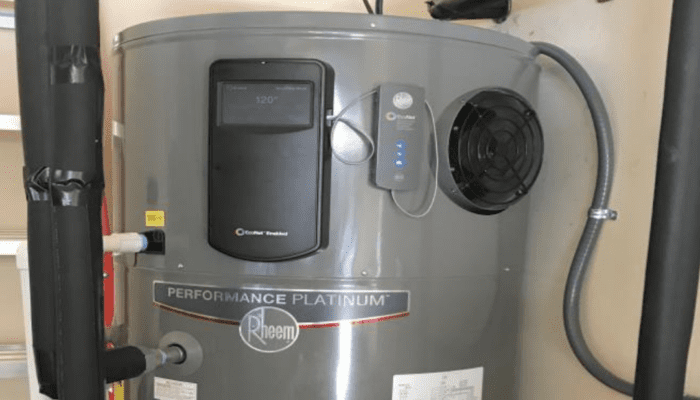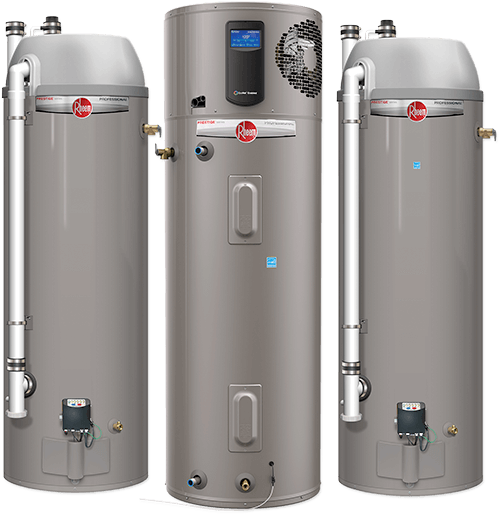If you are replacing your current water heater, you’ve probably compared the costs and benefits of Tank Style Water Heaters and Tankless Water Heaters. But did you know there is actually a third option? In the past few years, hybrid water heaters have hit the market as a great option for many homeowners in the South.
Also known as a heat pump water heater, the hybrid water heater combines the best aspects of conventional tank water heaters with the benefits of an energy-efficient heat pump. In fact, Consumer Reports recently determined that a Hybrid water heater’s use is about 60 percent less energy cost than standard electric water heaters.
We understand that selecting the right water heater for your home can be overwhelming. Reliant Plumbing’s master plumbers have put together this handy guide with everything you need to know about hybrid water heaters.

Hybrid Water Heater FAQ's
What Is The Difference Between Hybrid and Heat Pump Water Heaters?
Surprisingly enough, both of these terms are used to describe hybrid water heaters. We will be referring to them mostly as hybrid water heaters.
How Do Hybrid Water Heaters Work?
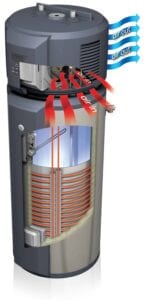 A hybrid water heater works by pulling heat in from directly outside of the unit. It then sends the heat to the enclosed water tank. Hybrid heaters use this outside warmth to heat the water, which make them great fits for places with hot climates such as Austin, Dallas, and San Antonio. Then during times of high hot water demand, the hybrid water heater switches to the standard method of heating water directly like a tank style water heater. This gives you the best of both worlds and means that you will never run out of hot water.
A hybrid water heater works by pulling heat in from directly outside of the unit. It then sends the heat to the enclosed water tank. Hybrid heaters use this outside warmth to heat the water, which make them great fits for places with hot climates such as Austin, Dallas, and San Antonio. Then during times of high hot water demand, the hybrid water heater switches to the standard method of heating water directly like a tank style water heater. This gives you the best of both worlds and means that you will never run out of hot water.
Pros of Using A Hybrid Water Heater?
- The biggest advantage of a hybrid water heater is that it will never run out of hot water – even if you are using multiple showers at a time.
- Hybrid water heaters are the ultimate luxury in hot water.
- They are also very energy efficient, which means they are better for the environment & your community.
- A very unique perk of hybrids is that they can cool & dehumidify a space up to 700sf – perfect for a studio, garage or workshop.
- You likely wouldn’t need an AC unit in these spaces!
- Hybrid Water Heaters typically survive longer than a conventional water heater.
Cons to Using a Hybrid Water Heater?
- The up-front cost to install a hybrid water heater is higher than a standard tank style unit.
- They are only compatible with electric power sources. No gas hybrids exist currently.
- Hybrid water heaters need to be installed in rooms that are at least 12’ x 12’ to have enough hot air to draw heat from.
- they might not fit well in areas with lower ceilings because the heat pump is on top of the unit.
- They do not function well in colder climates, so they aren’t an option unless you live in a warm climate, like our customers in Texas.
Can I Get A Hybrid Water Heater Where I Live?
It depends on where you are located in the United States. Hybrid units work best in areas with hot climates, like Austin. They only function well in spaces that are constantly at or above 40 degrees Fahrenheit. So, these units would not function well in regions that can get quite cold, such as Alaska and New England.
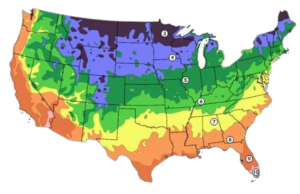
Where Can I Put My Hybrid Water Heater?
There are several things to consider when choosing an installation spot:
- Find a dry, indoor area that’s protected from freezing temps — like an attic, closet, utility room, or garage.
- Make sure that there’s at least 7″ clearance around your water heater from objects, including appliances and walls.
- Ideally, you should have a drain for the condensate line. If you don’t have one, you can add a pump or run the line outside.
- Since the unit gets rid of hot air around it, place it somewhere you don’t mind being cold. Rooms closest to the hybrid heater will get pretty cool.
How Long Do Hybrid Water Heaters Last?
These units last significantly longer than conventional water heaters. Tank-style heaters last about 8 to 12 years. Hybrid units run for about 13-15 years. That is an additional 1 to 3 years before needing a replacement! Hybrid water heaters are built to last! Ask our plumbers about hybrid options for your home today.
Learn More About Hybrid Water Heaters and Our Other Services

Preventative Maintenance for Your Hybrid Water Heater
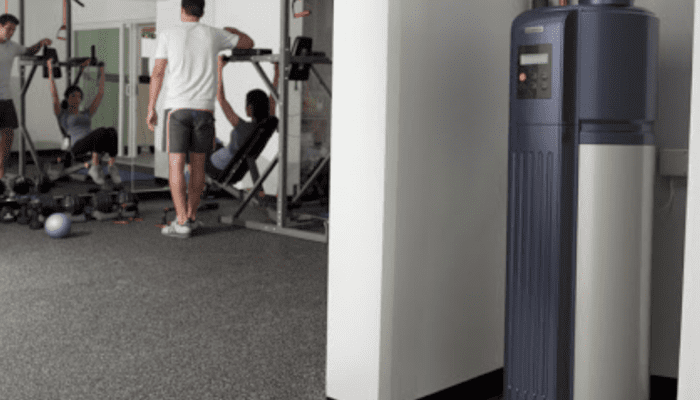
How to Install or Replace a Hybrid Water Heater
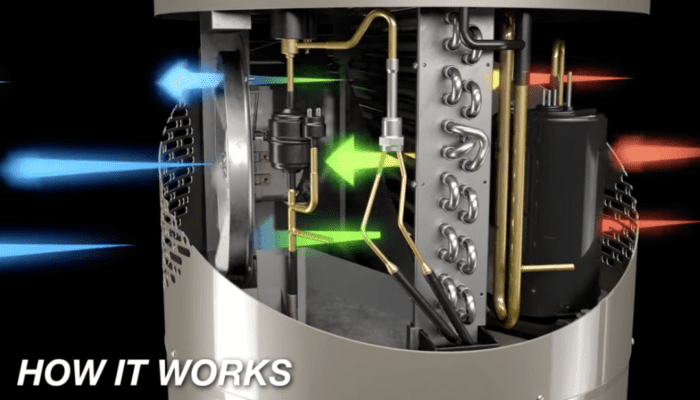
Best Brand of Hybrid Water Heaters
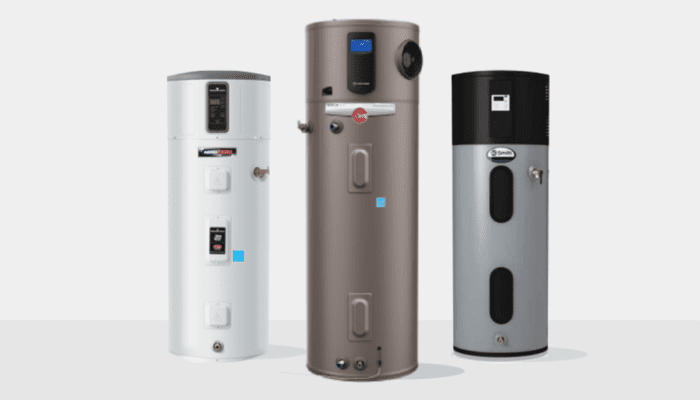
Hybrid Water Heater Sizing Guide
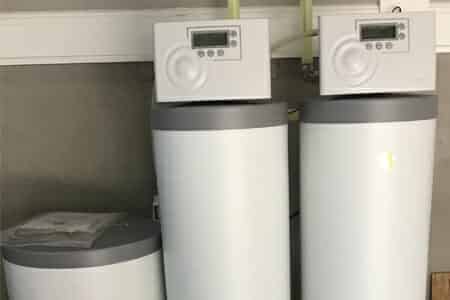
4 Signs You May Need a Water Softener
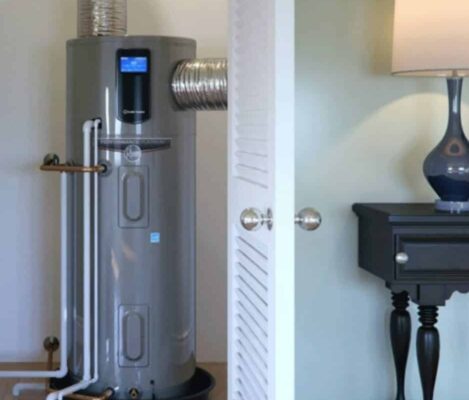
Austin Texas Water Heater Repairs and Maintenance
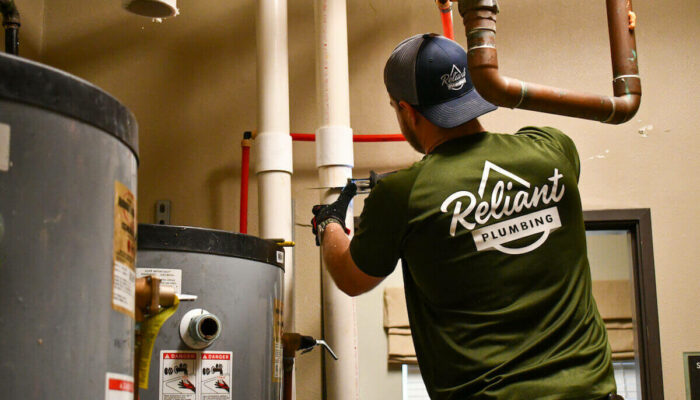
San Antonio Water Heater Repairs and Maintenance
